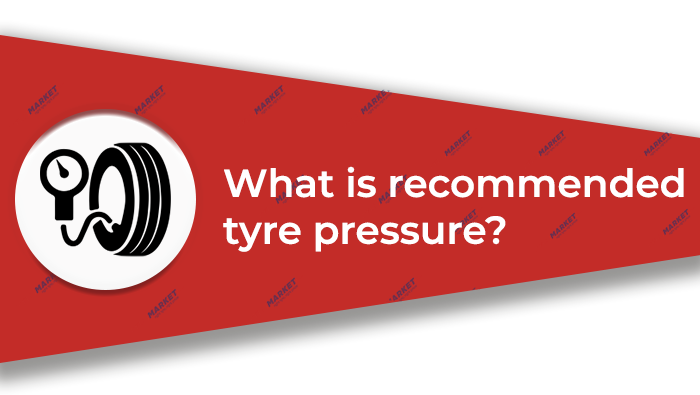Being vehicle owners, we agree, the most ignored aspect in a vehicle is its tyres - by tyres we mean their condition. And in tyres, one thing no one cares about is the tyre pressure. Many fill air only after tyre wobbling is sensed due to low air pressure. While most may even not know the right tyre pressure recommended by the carmaker for their car. This is because we leave this so-called 'irrelevant' thing to the mechanics to take care.

Be it under inflation or over inflation, both are not good for any tyre, it has to be filled with the right air pressure as suggested by the car or tyre manufacturer. Because, tyre pressure plays an important role in a vehicle's performance concerning stability, handling and longevity aspect.
Remember, depending upon tyre size, the tyre pressure varies. Thus, any random inflation value does not fit all vehicle tyres. Also, in many cars, the air pressure value is different for the front and rear tyre.
How to know when your car tyre is underinflated?
Any vehicle tyre that doesn't have required optimum pressure to carry the overall weight of the vehicle is known as underinflated tyre. Although there is no particular value of the air pressure that can qualify for being underinflated. However, in general (in most countries) if the tyre pressure is less than 25 percent of the recommended value, it's termed as underinflated. This equates to about 3-7 psi less than the prescribed air pressure in a tyre.

What is recommended tyre pressure?
The tyre pressure advised by the tyre/vehicle manufacturer for a particular tyre is the 'recommended tyre pressure'. The given recommended psi value for a tyre should be filled when the tyres are in a cold state, and not hot or running, preferably.

Where to find it?
The recommended tyre pressure in a vehicle can be located on a sticker at the driver's side door jamb or edge. Or, can also be found in the user manual of the car. Many passenger car tyre brands also mention the tyre pressure on the sidewalls of the tyre. However, it's the maximum tyre pressure and 'not' the recommended tyre pressure.
Remember, maximum tyre pressure is not the recommended tyre pressure or optimum tyre pressure. The maximum tyre pressure is only required when the vehicle is heavily loaded. While in general day-to-day conditions recommended tyre pressure works best.

How air pressure impacts on a tyre?
If the recommended tyre pressure is not maintained in the car tyres, it will adversely affect tyre's physical condition. And this includes (a) rapid tyre wear and (b) tyre injuries.

Rapid tyre wear - overinflated tyre
While filling the compressed air sidewalls can take in excessive air to a certain limit. However, that's not the case with tread or the central part of the tyre. And due to overfill, the central area sees an abrupt swell or curve like shape. This results in the fast wearing of the central part of the tyre, while at the same time sides of the tyre see less or no wear indications.
Rapid tyre wear - underinflated tyre
Exactly the opposite happens when the tyre holds less air than the recommended pressure. Here, instead of the central part friction (overinflated tyre case), the sides, or the shoulder area wears faster. Prolonged use with under-inflated tyres causes premature tyre tread wear, and may also lead to tread part separating from the sidewalls.
Tyre damages - under inflation
When the wheel rotates on the surface the tyre develops heat due to the friction between the surface and tyre tread. In case of an underinflated tyre, the flexing and heating happen at a greater intensity which may cause internal damage to the tyre. Further, if an underinflated tyre is burdened with excessive load, it will flex more and get heated more quickly which makes it more prone to injuries. Thus, to avoid any damage tyre pressure should be attuned accordingly.
And if the vehicle is driven at high speeds with underinflated tyre and heavy load, chances of tyre tread belt separation are high, especially during hot climate. This may result in severe loss in control or tyre burst.
The decrease in overall mileage
Overinflation or under inflation in tyres not only leads to their premature wear but also affects fuel mileage to an extent. Let's understand this with an example. A tyre that has 10-20 percent less air pressure (than the recommended) will consume 10-20 percent more fuel. This means a potential loss of 2000-4000 kilometres each time a car/vehicle covers 10000-20000 kilometres.
The tyre pressure effect on tyre and vehicle performance
And these include braking and grip, handling, tyre wear and durability, fuel economy, rolling resistance, ride quality and comfort, tyre damage, etc. All these aspects are correlated and function with each other in conjunction.
Effects of tyre pressure on vehicle and its handling
Underinflated tyres do not steer easily and are less responsive compared to the ones with proper tyre pressure. And hence, lead to poor handling. Underinflated tyres may also cause:
- Loss of control during cornering
- Loss of control during a lane change
- Higher stopping distance
- High chances of aquaplaning
- Tyre burst due to sudden loss of air pressure
So, to ensure optimum performance of your vehicle checkout the right tyre air pressure as per your car model here. The list also includes separate pressure for the front as well as rear tyres.
Just like the cars, the right tyre pressure value enhances performance and improves stability aspect in bikes too. To know the recommended tyre pressure in your bike click here.
Recommended tyre pressure results in improved performance and allows you to extract maximum performance and mileage from your tyre. To check for recommended tyre pressure in scooters click here.